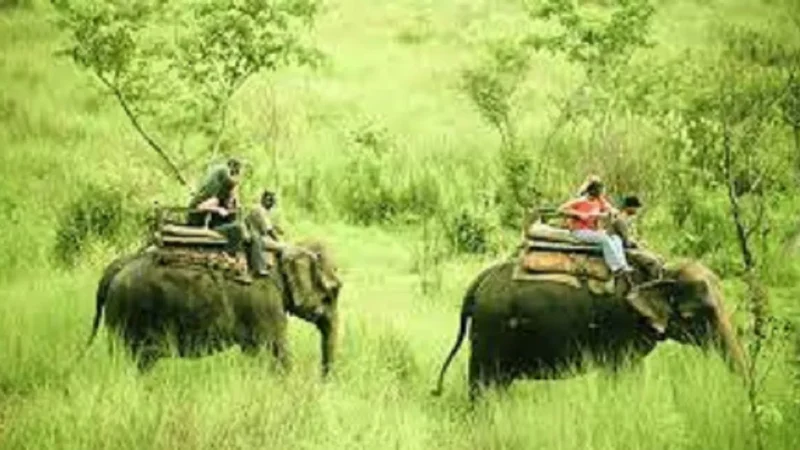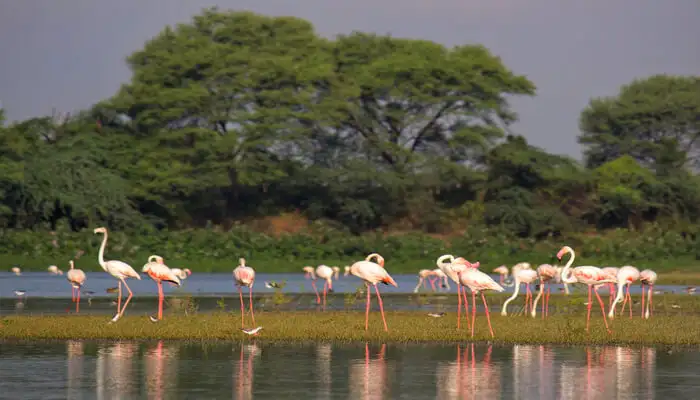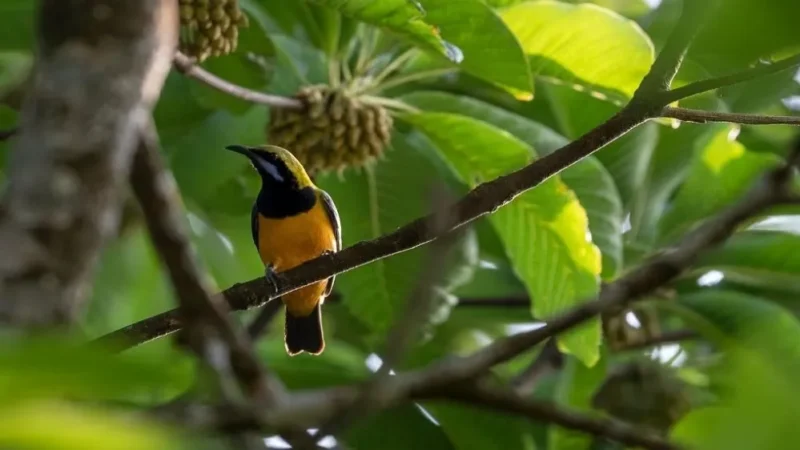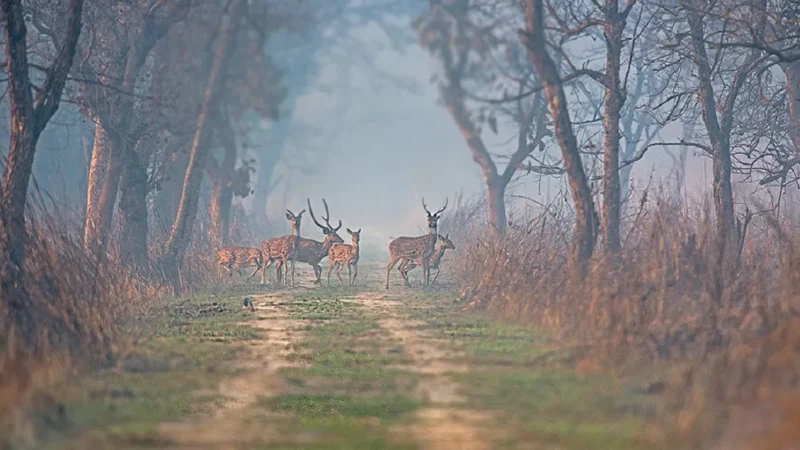Zoo in Vadodara – Sayaji Baug Zoo | Timing, Ticket, and Animals
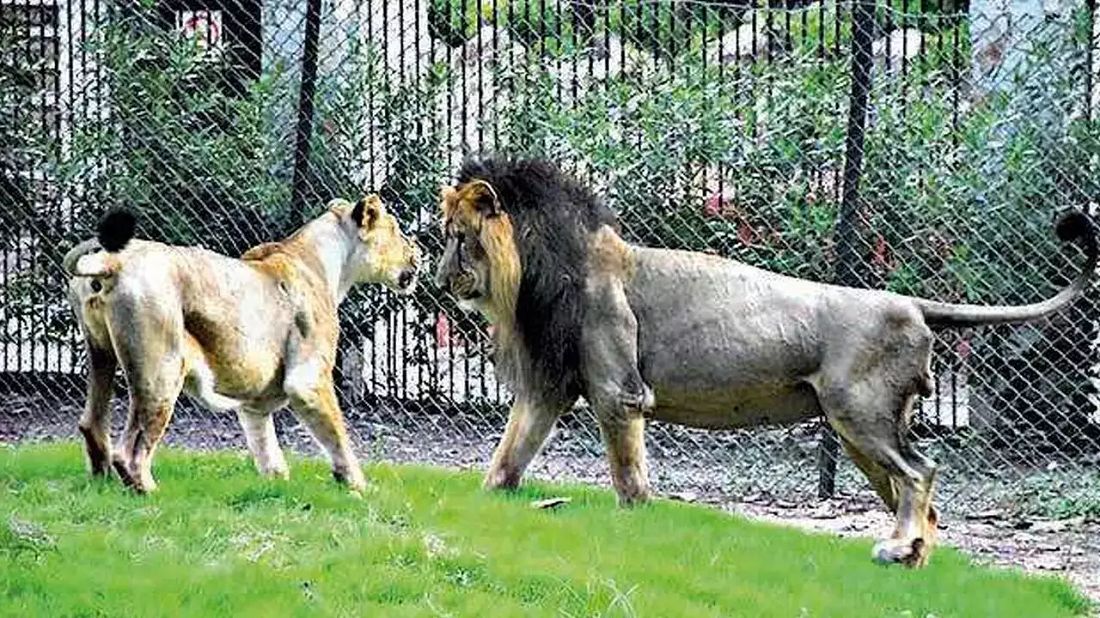
Nestled within the heart of Vadodara, Gujarat, lies a verdant sanctuary that captivates the senses and offers a respite from the urban hustle – Sayaji Baug Zoo. More than just a zoological park, Sayaji Baug Zoo is a harmonious blend of nature’s beauty and the diverse tapestry of wildlife. As you step into this oasis, you are welcomed by lush greenery, historic charm, and the intriguing allure of the animal kingdom. Join me on a virtual journey as we explore the wonders that unfold within the gates of Sayaji Baug Zoo, unraveling tales of conservation, biodiversity, and the sheer joy of connecting with the natural world.
Table of Contents
ToggleHistory of the Sayaji Baug Zoo
In 1875, Maharaja Sayajirao Gaekwad III, the visionary ruler of the Baroda State, envisioned a grand public park for his citizens. He chose a picturesque tract of land on the banks of the Vishwamitri river and commissioned the development of what would become Sayaji Baug. As part of this grand project, a zoo was established in 1879, initially housing animals from the Maharaja’s private collection.
The early years saw the zoo showcasing various Indian and exotic species. The Maharaja’s dedication to education and conservation ensured the zoo played a crucial role in public awareness and appreciation for wildlife. He actively participated in animal exchanges with other zoos, further enriching the collection and fostering collaboration.
Over the decades, the Sayaji Baug Zoo has undergone significant transformations. Animal enclosures have been upgraded to meet modern standards, focusing on providing spacious and naturalistic habitats. Breeding programs have been implemented for endangered species, and the zoo has actively participated in conservation efforts beyond its gates.
Location of Sayaji Baug Zoo
Sayaji Baug Zoo, also known as Kamati Baug Zoo, is located in Vadodara (formerly Baroda), Gujarat, India. Specifically, it is situated within the Sayaji Baug (Kamati Baug) garden complex. The address of Sayaji Baug is:
Sayaji Baug,Vinoba Bhave Road, Vadodara, Gujarat, India.
Sayaji Baug Zoo Entry Fee
Children Below 12 years of Age- Rs 10
Adults – Rs 20
Camera Fees – Rs 100
Video Camera Fees – Rs 100
Sayaji Baug Zoo Timings
Timing: 8.15 a.m. to 11.30 a.m., 2.30 p.m. to 06.00 p.m.
Closed on Thursdays
Best time to visit Sayaji Baug Zoo
The best time to visit Sayaji Baug Zoo depends on your priorities and what you hope to get from your experience. Here’s a breakdown to help you decide:
For pleasant weather and avoiding crowds:
- Early mornings (8:00 AM – 10:00 AM): This is the ideal time to beat the heat and the crowds. Animals are usually more active in the cooler morning temperatures, and you’ll practically have the enclosures for peaceful observation.
- Late afternoons (4:00 PM – 5:30 PM): The heat subsides in the late afternoon, making it a more comfortable time to be outdoors. You might still encounter crowds, but it will be more manageable than midday.
For animal sightings and activities:
- Mid-mornings (10:00 AM – 12:00 PM): After their morning meal, animals are often more active and visible in their enclosures. This is an excellent time to catch feeding demonstrations or scheduled zoo activities.
- Early evenings (3:00 PM – 4:00 PM): Animals become more active as the day cools. You can also see them enjoying their evening meals.
Layout of Sayaji Baug Zoo
The entire Sayaji Baug complex covers an area of approximately 113 acres (around 46 hectares). This expansive green space includes the zoo and various attractions, gardens, and recreational areas.
The zoo is broadly divided into three main sections:
- Bird Section:This area houses various Indian and exotic birds, including parrots, flamingos, pelicans, and hornbills. It’s near the main entrance and features several aviaries and walkthrough enclosures.
- Bear Section (Rinchh Khana):This section, as the name suggests, focuses on different bear species like sloth bears, Himalayan black bears, and brown bears. It’s situated in the central part of the zoo and features spacious enclosures with natural elements like climbing structures and pools.
- Tiger Section (Wagh Khana):This section is home to the majestic Royal Bengal Tigers and is a major draw for visitors. It’s located towards the southern end of the zoo and features large, moated enclosures with viewing platforms for safe observation.
Fauna of Sayaji Baug Zoo
The Sayaji Baug Zoo boasts a diverse collection of fauna, housing over 1100 animals representing 167 species. Here’s a glimpse into the fascinating residents you can encounter:
Mammals:
- Majestic Predators: Asiatic lions, leopards, sloth bears, wolves, jackals, and hyenas.
- Grazing Herbivores: Nilgai, sambar deer, spotted deer, blackbuck, barking deer, and chinkara.
- Primates: Mandrill monkeys, rhesus macaques, bonnet macaques, and pig-tailed macaques.
- Endangered Species: Himalayan black bears, Indian pangolins, and gharials (aquatic crocodile).
Birds:
- Vibrant Aviaries: Parrots, hornbills, pheasants, pelicans, flamingos, and various waterfowl species.
- Open-Air Enclosures: Vultures, owls, cranes, and storks showcasing their impressive wingspans.
- Local Delights: Indian peafowl, junglefowl, and Indian rollers adding a splash of local color.
Reptiles:
- Serpent Safari: Indian cobras, pythons, vipers, and various harmless snakes.
- Ancient Wonders: Gangetic gavials, monitor lizards, and turtles representing the prehistoric world.
Flora of Sayaji Baug Zoo
Sayaji Baug Zoo is home to a lush and diverse flora, with over 98 species of trees and shrubs. The trees provide shade and shelter for the animals, and the shrubs offer bird food and nesting sites. The zoo also features several flowering plants, which add a splash of color and beauty.
Here are some of the most common trees found in the zoo:
- Banyan trees: These large, spreading trees provide shade and shelter for various animals.
- Peepal trees: These sacred trees are associated with Hinduism and Buddhism.
- Mango trees: These trees bear delicious fruit that humans and animals enjoy.
- Neem trees: These trees are known for their medicinal properties.
- Ficus trees: These trees are home to a variety of epiphytes, such as orchids and bromeliads.
The zoo also features several flowering plants, including:
- Lotus: This iconic flower is native to India and is associated with spirituality and purity.
- Marigold: These bright yellow flowers are often used in religious ceremonies.
- Hibiscus: These colorful flowers are popular ornamental plants.
- Roses: These fragrant flowers are a popular choice for bouquets and arrangements.
- Bougainvillea: These vibrant flowers are native to South America and are a popular addition to gardens.
Fun activities at Sayaji Baug Zoo
Beyond admiring the fantastic fauna and flora, Sayaji Baug Zoo offers a variety of fun activities to make your visit a memorable experience! Here are some ideas for all ages and interests:
For Everyone:
- Picnic in the Gardens: Pack a delicious lunch and find a shady spot under the trees to enjoy a relaxing picnic with family or friends.
- Train Ride: Hop on the miniature train that meanders through the zoo, offering kids a different perspective and a fun ride.
- Boat Ride: Enjoy a peaceful boat ride on the lake within the zoo, taking in the scenic beauty and spotting water birds.
- Interactive exhibits: Check out the various interactive exhibits, like the bird aviary where you can walk amongst the birds, or the touch pool where you can feel the smooth scales of turtles and fishes.
- Museum Visit: Combine your zoo visit with a trip to the nearby Maharaja Fatehsingh Rao Gaekwad Museum, showcasing rich archaeological and art collections.
For Animal Enthusiasts:
- Guided Tours: Opt for a guided tour by zoo staff to learn more about the animals, their conservation efforts, and interesting facts.
- Animal Observation: Choose a quiet spot near an enclosure and patiently observe the animals’ behavior, interactions, and unique habits.
- Feeding Demonstrations: Witness scheduled feeding demonstrations at selected enclosures, learning about the animals’ diets and natural instincts.
- Nocturnal House Visit: Embark on a nocturnal adventure in the dedicated house to see animals active at night, like owls, bats, and nocturnal mammals.
- Safari Park: Get ready for the upcoming jeep safari experience once the under-development park opens, offering a closer look at herbivores in a semi-natural setting.
How to Reach Sayaji Baug Zoo
To reach Sayaji Baug Zoo in Vadodara, Gujarat, India, you can use various modes of transportation. Here are some common ways to reach the zoo:
By Air:
- The nearest airport to Vadodara is Vadodara Airport (Civil Airport Harni). You can fly to Vadodara and then proceed to Sayaji Baug Zoo using local transportation like taxis or auto-rickshaws.
By Train:
- Vadodara Junction (BRC) is a major railway station in the city. You can take a train to Vadodara Junction and then use local transportation to reach Sayaji Baug Zoo.
By Bus:
- Vadodara is well-connected by road, and you can reach Vadodara by bus from various cities in Gujarat and neighboring states. After reaching Vadodara, you can use local buses, auto-rickshaws, or taxis to get to Sayaji Baug Zoo.
By Car:
- If you prefer to drive, you can use a car to reach Vadodara and then navigate to Sayaji Baug Zoo using GPS or maps. The zoo is located within the city, and you can follow road signs to reach your destination.
Places to Visit near Sayaji Baug Zoo
Your visit to Sayaji Baug Zoo can be the perfect starting point for exploring the vibrant city of Vadodara and its surrounding areas. Here are some exciting places you can visit near the zoo, catering to diverse interests and preferences:
Nature and History:
- Sursagar Lake: A picturesque lake, ideal for taking a boat ride, enjoying scenic walks, or picnicking amidst nature. (Image of Sursagar Lake in Vadodara)
- Champaner-Pavagadh Archaeological Park: A UNESCO World Heritage Site encompassing ancient Hindu and Jain temples, forts, and caves carved into the hills. (Image of Champaner-Pavagadh Archaeological Park in Vadodara)
- Ajwa Garden: A sprawling garden featuring an Italian-style fountain, a Japanese garden, and a boating lake, offering a peaceful escape from the city bustle. (Image of Ajwa Garden in Vadodara)
- Ekal Bardi: A 15th-century stepwell with intricate carvings and historical significance, a glimpse into the region’s ancient water management system. (Image of Ekal Bardi in Vadodara)
Culture and Arts:
- Maharaja Fatehsingh Rao Gaekwad Museum: An extensive museum showcasing archaeological treasures, royal artifacts, and paintings, offering a window into the rich history of Baroda. (Image of Maharaja Fatehsingh Rao Gaekwad Museum in Vadodara)
- Baroda Museum and Picture Gallery: Located within Sayaji Baug, this museum houses a collection of sculptures, paintings, and objects from India and worldwide. (Image of Baroda Museum and Picture Gallery in Vadodara)
- Lukshmi Vilas Palace: A sprawling former royal palace showcasing Indo-Saracenic architecture, open for guided tours and offering a glimpse into the opulent lifestyle of the Gaekwads. (Image of Lakshmi Vilas Palace in Vadodara)
- BAPS Swaminarayan Mandir: An architecturally stunning Hindu temple complex with intricate carvings and serene atmosphere, providing a spiritual experience. (Image of BAPS Swaminarayan Mandir in Vadodara)
Entertainment and Shopping:
- Inorbit Mall Vadodara: A modern shopping mall with numerous brands, food outlets, and a cinema, offering a complete entertainment package. (Image of Inorbit Mall Vadodara)
- Seven Seas Mall: Another vibrant mall featuring shops, restaurants, a gaming zone, and a bowling alley, perfect for a family outing. (Image of Seven Seas Mall in Vadodara)
- Sardar Patel Planetarium: Located within Sayaji Baug, this planetarium offers educational shows about astronomy and space exploration, suitable for all ages. (Image of Sardar Patel Planetarium in Vadodara)
- ISKCON Temple: A colorful and vibrant Krishna temple complex with delicious vegetarian food stalls, offering a spiritual and cultural experience. (Image of ISKCON Temple in Vadodara)

